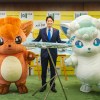
Baffling mixed messages during this year’s coverage of the Koshien tournament.
Japanese television programs love putting all sorts of text and graphics on-screen. It’s something sports broadcasts have always been especially fond of, and even since long before overseas broadcasters adopted the practice, baseball on TV in Japan resembled a video game, with a constant display of the score, inning, pitch count, and baserunner status.
熱中症警戒アラートが左にずっと出てる感に違和感はあるけれど💦
— た〜 (@f1uHC0pJ2bM9Dlz) August 6, 2023
愛知だけでなく兵庫も熱中症警戒アラート出てます🥺
何年か18切符で甲子園行って前外野で高校野球見ましたがカンカン照りで3回ぐらいで撤収しました😱
春は快適でした😊 pic.twitter.com/5APOWRCZn8
So when this year’s summer Koshien national high school baseball tournament opened last Sunday, people tuning in to watch it on TV naturally expected to see lots of telops, as Japan calls the onscreen overlays. But things took a surreal turn as one specific type of overlay kept showing up.
2023/8/6日13:17, TV中継画面上部「意識障害、重症時は救急車」とは日本国 環境省 気象庁 スポーツ庁が定義するところの「熱中症」警戒アラートのこと?or「平時」普段の
— 📕返却Books📗著者にThanks (@SonoMamma1) August 6, 2023
全国高校野球選手権記念大会 主催者、高野連、朝日新聞社、スポンサー、甲子園球場、経営者理事さんの脳内・意識の事だよね? pic.twitter.com/5CkBNILFEi
See the first three characters in the above overlay, 熱中症? Those are the kanji for necchuusho, or heatstroke. Japan is currently in the middle of a severe heat wave, and the temperature in Nishinomiya, Hyogo Prefecture, where the Koshien tournament takes place, hit a daytime high of 38 degrees Celsius (100.4 degrees Fahrenheit) on Sunday. And no, this wasn’t a dry heat – like most of Japan, Hyogo is both hot and humid in the summer. So throughout the game, viewers saw overlays notifying them of a heatstroke caution (熱中症警戒).
Things got even more surreal when national broadcaster NHK put up an overlay, seen in the photo below, saying “In principle, let’s suspend or postpone outside exercise” as the two teams of teens continued the contest.
「外での運動は原則、中止や延期をしましょう」とNHKさんテロップ流してますけど…#熱中症警戒アラート #甲子園 pic.twitter.com/n0V5FuwZ65
— フィロっす (@MXrSvHEmzTULath) August 6, 2023
In its coverage of the opening game between Ibaraki Prefecture’s Tsuchiura Nihon University High School and Nagano Prefecture’s Ueda Nishi High School, NHK put up different overlays for different parts of the country. For Hyogo, it went beyond the “heatstroke caution” to “heatstroke caution alert” (熱中症警戒アラート)
NHK「熱中症警戒アラートです」
— ぜろめが (@0Mbps) August 6, 2023
NHK「甲子園で熱い戦い」
ギャグか?????????? pic.twitter.com/FdHoaaHlod
One of the warnings also included the unsettling, though wise, advice of “In the case of severe symptoms such as loss of consciousness, call an ambulance.”
With this summer being especially hot, the tournament has introduced a 10-minute “cooling time” period after games’ fifth inning, roughly the half-way point. The teams’ benches also have cooling fans installed behind them, and ice vests and neck coolers are also available. None of that has much effect when the players are playing the game, though. Just after the end of the sixth inning, when Tsuchiura Nihon University High had been fielding, one of the team’s players collapsed and had to be carried off the field on a stretcher. The team’s coach later said that the boy had fallen because of a leg or foot cramp, a condition that can be triggered or intensified due to dehydration. The coach said that the boy’s body temperature at the time was measured at around 45 degrees Celsius (113 Fahrenheit).
Tsuchiura Nihon University High would go on to win the game by a score of 8 to 3.
高校野球見てるんやけど、画面にずっと熱中症警戒アラート出てるから甲子園の皆さんが心配になる。 pic.twitter.com/4mIYVIwHxn
— じゅん★タイッツーにもいるディスト&FF (@raspberrysugar) August 6, 2023
Self-sacrifice and playing through pain are big parts of Japan’s sports ethos, especially for youth sports and especially for baseball. Still, the jarring juxtaposition of being told “It’s too dangerously hot to exercise outside” at the same time as “Watch these kids competing in the midday sun!” is prompting social media reactions such as
“This makes no sense at all.”
“Are [the organizers’] brains functioning?”
“Shouldn’t this qualify as abuse?”
“There’s something wrong about this.”
“You wouldn’t still have a baseball under a storm warning [so why would you under a heatstroke alert], right?”
“I’m not just worried about the players, I’m worried about the people in the stands too.”
With representative teams from all of Japan’s 47 prefectures gathering for the tournament, and families, faculty, and classmates also attending, one could argue that Koshien, logistically, can only be held during the summer vacation period. What seems like it could be done, though, is to play at least some of the games at night. For this year’s tournament, the earliest game start time is 8 a.m., and no game has a starting time later than 3:45 p.m. It’s still blisteringly hot at 3:45 in the afternoon, though, and shifting some games back a few hours, say, one starting at dusk and another completely after sundown, would go a long way in preventing heatstroke.
Such a shift wouldn’t be without difficulties, though. All of the Koshien games are played on the same field, which means they have to be played one at a time. With Koshien Stadium being such hallowed ground, coaches, fans, and players too would likely react very negatively to having their game moved to an alternate site. With four games a day being played in the tournament’s early rounds, and roughly two and a half hours allotted for each, there’s not enough time to fit them all in after sunset without expanding the number of total days in the tournament.
That’s easier said than done for two reasons. First, as mentioned above, many family members and students travel with the team, and a longer tournament means they’d have to spend more on hotel and other travel expenses. In addition, Koshien Stadium is ordinarily the home ground of the Hanshin Tigers professional baseball team. The Tigers vacate Koshien Stadium during the tournament, playing games either on the road or at their alternate quasi-home stadium, Kyocera Dome Osaka. Much like with families needing to make longer hotel reservations for a longer Koshien tournament, though, If the Tigers were to extend their summer stay at Kyocera Dome Osaka, additional fees for the team would be involved.
None of those scheduling concerns would be much of an obstacle, though in rescheduling the tournament’s later-round games, when fewer are played each day, or its championship game, to after sundown. There is still the issue of night games themselves being more expensive, though, since lighting up a professional-grade stadium, which Koshien is, isn’t cheap.
All of those potential problems seem like they could be worked out, though. While the Koshien tournament is an amateur sports competition and NHK a public broadcaster, the games’ broadcasts draw huge television viewership numbers and comparably sized sponsorships from companies that see value in having their name seen by the combined millions of people at the stadium and watching from home. The tournament itself is regularly presented as a showcase of exemplary determination and perseverance by the young players, so it doesn’t seem unreasonable to expect the adults who organize it to work a little harder at making it safer and better for the kids on the field.
Source: Tokyo Sports Web via Yahoo! Japan News via Jin, Nikkan Gendai, Goo Weather, Koko Yakyu News, Twitter
Top image: Pakutaso
Insert images:
● Want to hear about SoraNews24’s latest articles as soon as they’re published? Follow us on Facebook and Twitter!
Follow Casey on Twitter, where there are a lot of things he misses about playing high school football, but full-pads practice in the August heat isn’t one of them.

 Upskirt photos lead Japanese high school to redesign cheerleader uniforms
Upskirt photos lead Japanese high school to redesign cheerleader uniforms Japanese high school baseball players are all class, immediately clean stadium after road loss
Japanese high school baseball players are all class, immediately clean stadium after road loss Japanese student athletes facing criticism for selling pro baseball team’s gifts of dirt online
Japanese student athletes facing criticism for selling pro baseball team’s gifts of dirt online Female high school students continue to be banned on baseball field at Koshien Stadium in Japan
Female high school students continue to be banned on baseball field at Koshien Stadium in Japan Baseball star Ichiro Suzuki to coach champion high school baseball team in Japan
Baseball star Ichiro Suzuki to coach champion high school baseball team in Japan Foreigner’s request for help in Tokyo makes us sad for the state of society
Foreigner’s request for help in Tokyo makes us sad for the state of society Japanese city loses residents’ personal data, which was on paper being transported on a windy day
Japanese city loses residents’ personal data, which was on paper being transported on a windy day Seaside scenery, history, and so many desserts on Yokohama’s Akai Kutsu【Japan Loop Buses】
Seaside scenery, history, and so many desserts on Yokohama’s Akai Kutsu【Japan Loop Buses】 Ghibli Park now selling “Grilled Frogs” from food cart in Valley of Witches
Ghibli Park now selling “Grilled Frogs” from food cart in Valley of Witches Historical figures get manga makeovers from artists of Spy x Family, My Hero Academia and more
Historical figures get manga makeovers from artists of Spy x Family, My Hero Academia and more Suntory x Super Mario collaboration creates a clever way to transform into Mario【Videos】
Suntory x Super Mario collaboration creates a clever way to transform into Mario【Videos】 Akihabara pop-up shop sells goods made by Japanese prison inmates
Akihabara pop-up shop sells goods made by Japanese prison inmates Japan’s massive matcha parfait weighs 6 kilos, contains hidden surprises for anyone who eats it
Japan’s massive matcha parfait weighs 6 kilos, contains hidden surprises for anyone who eats it New adorable, two-color Vulpix airplane will take you to Hokkaido, not even for a limited time
New adorable, two-color Vulpix airplane will take you to Hokkaido, not even for a limited time Japan removes tour guide requirement for foreign tourists
Japan removes tour guide requirement for foreign tourists McDonald’s new Happy Meals offer up cute and practical Sanrio lifestyle goods
McDonald’s new Happy Meals offer up cute and practical Sanrio lifestyle goods Japanese ramen restaurants under pressure from new yen banknotes
Japanese ramen restaurants under pressure from new yen banknotes French Fries Bread in Tokyo’s Shibuya becomes a hit on social media
French Fries Bread in Tokyo’s Shibuya becomes a hit on social media Studio Ghibli releases new action figures featuring Nausicaä of the Valley of the Wind characters
Studio Ghibli releases new action figures featuring Nausicaä of the Valley of the Wind characters New private rooms on Tokaido Shinkansen change the way we travel from Tokyo to Kyoto
New private rooms on Tokaido Shinkansen change the way we travel from Tokyo to Kyoto Red light district sushi restaurant in Tokyo shows us just how wrong we were about it
Red light district sushi restaurant in Tokyo shows us just how wrong we were about it Tokyo Tsukiji fish market site to be redeveloped with 50,000-seat stadium, hotel, shopping center
Tokyo Tsukiji fish market site to be redeveloped with 50,000-seat stadium, hotel, shopping center All-you-can-drink Starbucks and amazing views part of Tokyo’s new 170 meter-high sky lounge
All-you-can-drink Starbucks and amazing views part of Tokyo’s new 170 meter-high sky lounge Beautiful Ghibli sealing wax kits let you create accessories and elegant letter decorations【Pics】
Beautiful Ghibli sealing wax kits let you create accessories and elegant letter decorations【Pics】 Studio Ghibli releases Kiki’s Delivery Service chocolate cake pouches in Japan
Studio Ghibli releases Kiki’s Delivery Service chocolate cake pouches in Japan New definition of “Japanese whiskey” goes into effect to prevent fakes from fooling overseas buyers
New definition of “Japanese whiskey” goes into effect to prevent fakes from fooling overseas buyers Our Japanese reporter visits Costco in the U.S., finds super American and very Japanese things
Our Japanese reporter visits Costco in the U.S., finds super American and very Japanese things Studio Ghibli unveils Mother’s Day gift set that captures the love in My Neighbour Totoro
Studio Ghibli unveils Mother’s Day gift set that captures the love in My Neighbour Totoro More foreign tourists than ever before in history visited Japan last month
More foreign tourists than ever before in history visited Japan last month New Pokémon cakes let you eat your way through Pikachu and all the Eevee evolutions
New Pokémon cakes let you eat your way through Pikachu and all the Eevee evolutions Sales of Japan’s most convenient train ticket/shopping payment cards suspended indefinitely
Sales of Japan’s most convenient train ticket/shopping payment cards suspended indefinitely Sold-out Studio Ghibli desktop humidifiers are back so Totoro can help you through the dry season
Sold-out Studio Ghibli desktop humidifiers are back so Totoro can help you through the dry season Japanese government to make first change to romanization spelling rules since the 1950s
Japanese government to make first change to romanization spelling rules since the 1950s Ghibli founders Toshio Suzuki and Hayao Miyazaki contribute to Japanese whisky Totoro label design
Ghibli founders Toshio Suzuki and Hayao Miyazaki contribute to Japanese whisky Totoro label design Doraemon found buried at sea as scene from 1993 anime becomes real life【Photos】
Doraemon found buried at sea as scene from 1993 anime becomes real life【Photos】 Tokyo’s most famous Starbucks is closed
Tokyo’s most famous Starbucks is closed One Piece characters’ nationalities revealed, but fans have mixed opinions
One Piece characters’ nationalities revealed, but fans have mixed opinions We asked a Uniqlo employee what four things we should buy and their suggestions didn’t disappoint
We asked a Uniqlo employee what four things we should buy and their suggestions didn’t disappoint Princesses, fruits, and blacksmiths: Study reveals the 30 most unusual family names in Japan
Princesses, fruits, and blacksmiths: Study reveals the 30 most unusual family names in Japan 119-year-old Japanese high school stops forcing baseball players to shave their heads
119-year-old Japanese high school stops forcing baseball players to shave their heads Baskin Robbins introduces a limited-edition ice cream to celebrate the boys of summer
Baskin Robbins introduces a limited-edition ice cream to celebrate the boys of summer Petition started to stop forcing students to cheer for their high school baseball teams
Petition started to stop forcing students to cheer for their high school baseball teams 82-0 shellacking kicks off Japan’s National High School Baseball Championship
82-0 shellacking kicks off Japan’s National High School Baseball Championship Coca-Cola’s new limited-edition Japan travel destination bottles highlight history and culture
Coca-Cola’s new limited-edition Japan travel destination bottles highlight history and culture Baseball players like Frozen too: “Let It Go” chosen for Spring Koshien baseball tournament
Baseball players like Frozen too: “Let It Go” chosen for Spring Koshien baseball tournament Student baseball players in Japan improve with less training after COVID-19 hiatus
Student baseball players in Japan improve with less training after COVID-19 hiatus Déjà vu? Japanese baseball’s movie poster spoof is sure to get fans’ attention
Déjà vu? Japanese baseball’s movie poster spoof is sure to get fans’ attention Nike commercial about gender inequality in Japan receives backlash online【Video】
Nike commercial about gender inequality in Japan receives backlash online【Video】 South Korean World Cup team pulls the ol’ switcharoo, changes player numbers to confuse rivals
South Korean World Cup team pulls the ol’ switcharoo, changes player numbers to confuse rivals Beautiful Taiwanese cheerleader dubbed “stadium angel” by adoring baseball fans【Pics, Videos】
Beautiful Taiwanese cheerleader dubbed “stadium angel” by adoring baseball fans【Pics, Videos】 Can five middle-aged guys who graduated high school years ago still sing their school songs?
Can five middle-aged guys who graduated high school years ago still sing their school songs?
Leave a Reply